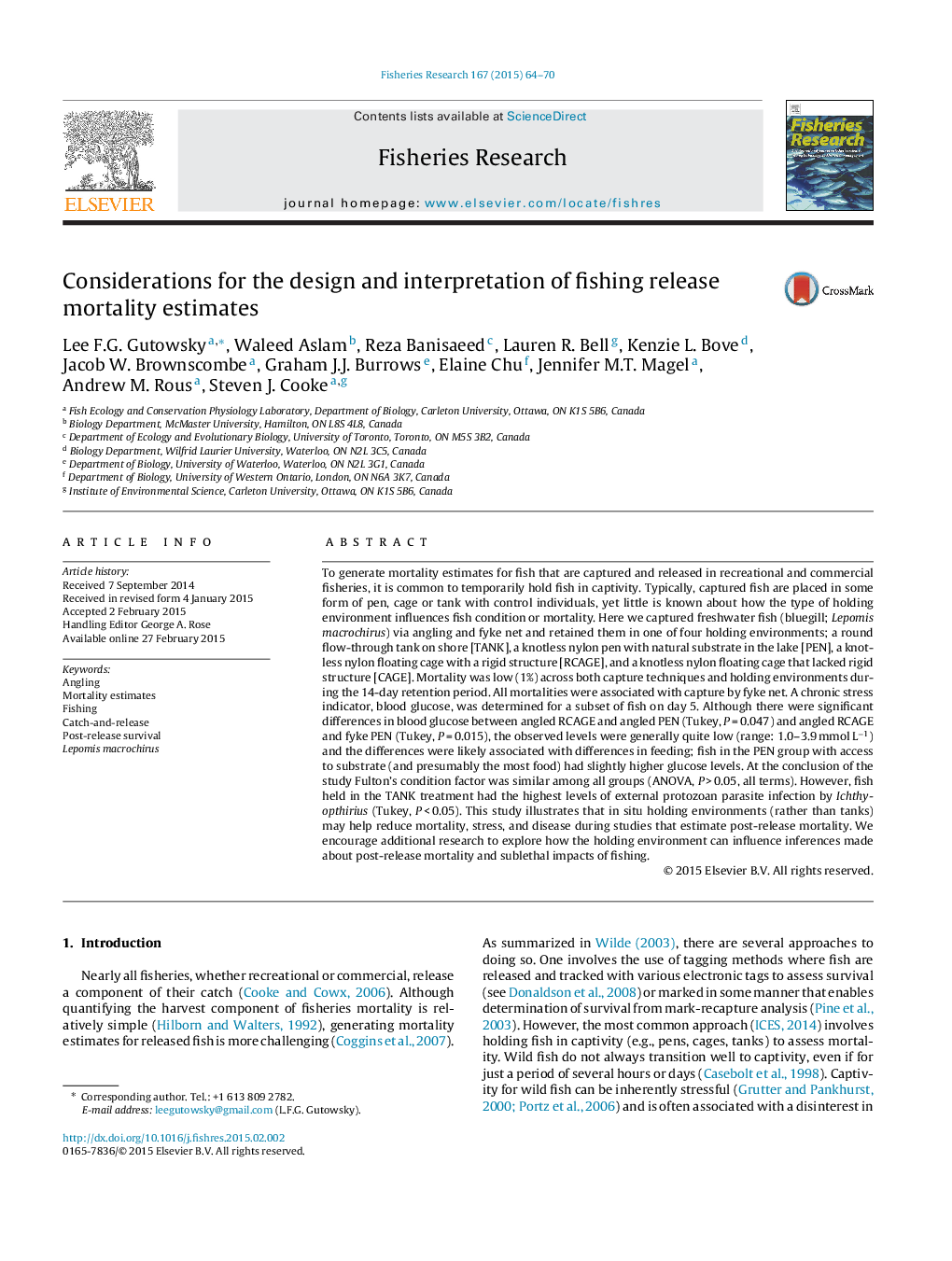| کد مقاله | کد نشریه | سال انتشار | مقاله انگلیسی | نسخه تمام متن |
|---|---|---|---|---|
| 4542891 | 1626801 | 2015 | 7 صفحه PDF | دانلود رایگان |
To generate mortality estimates for fish that are captured and released in recreational and commercial fisheries, it is common to temporarily hold fish in captivity. Typically, captured fish are placed in some form of pen, cage or tank with control individuals, yet little is known about how the type of holding environment influences fish condition or mortality. Here we captured freshwater fish (bluegill; Lepomis macrochirus) via angling and fyke net and retained them in one of four holding environments; a round flow-through tank on shore [TANK], a knotless nylon pen with natural substrate in the lake [PEN], a knotless nylon floating cage with a rigid structure [RCAGE], and a knotless nylon floating cage that lacked rigid structure [CAGE]. Mortality was low (1%) across both capture techniques and holding environments during the 14-day retention period. All mortalities were associated with capture by fyke net. A chronic stress indicator, blood glucose, was determined for a subset of fish on day 5. Although there were significant differences in blood glucose between angled RCAGE and angled PEN (Tukey, P = 0.047) and angled RCAGE and fyke PEN (Tukey, P = 0.015), the observed levels were generally quite low (range: 1.0–3.9 mmol L−1) and the differences were likely associated with differences in feeding; fish in the PEN group with access to substrate (and presumably the most food) had slightly higher glucose levels. At the conclusion of the study Fulton's condition factor was similar among all groups (ANOVA, P > 0.05, all terms). However, fish held in the TANK treatment had the highest levels of external protozoan parasite infection by Ichthyopthirius (Tukey, P < 0.05). This study illustrates that in situ holding environments (rather than tanks) may help reduce mortality, stress, and disease during studies that estimate post-release mortality. We encourage additional research to explore how the holding environment can influence inferences made about post-release mortality and sublethal impacts of fishing.
Journal: Fisheries Research - Volume 167, July 2015, Pages 64–70
